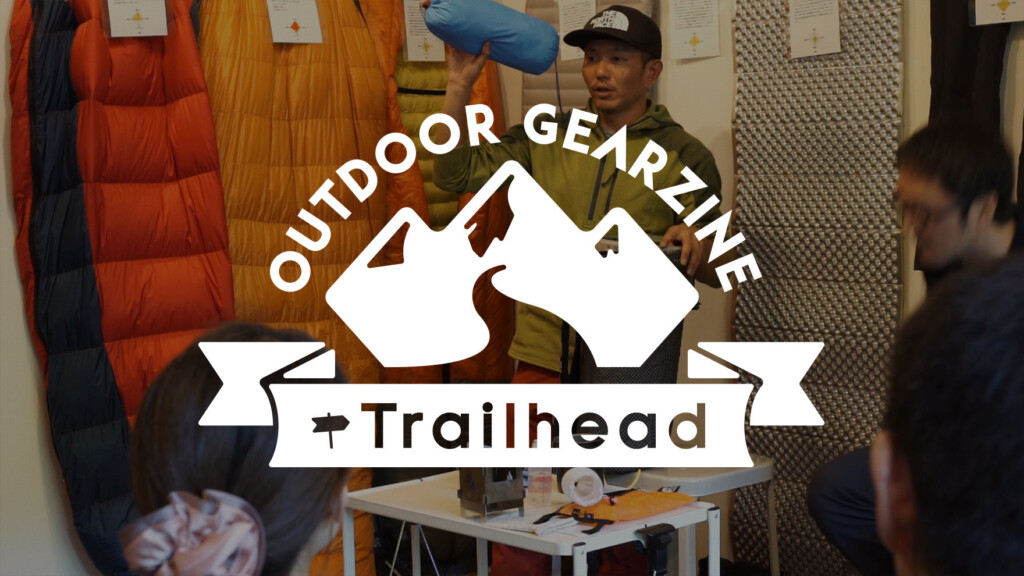
What does UL packing look like for masters? 05 Tips for good packing and how to choose a smart backpack
Packing for hiking or mountain climbing is not just about how to neatly pack a large amount of luggage. Proper packing stabilizes your center of gravity, making you less tired and reducing the risk of accidents such as falls due to unsteadiness. While packing is not something to be taken lightly when hiking, many first-time hikers are likely to be confused about what to do
Outdoor Gearzine Trailhead was planned to ask an expert for tips on packing, which can be difficult for beginners to find the right answer for. So , in the fifth video summary series, we will be talking about "packing" and "backpacks."
First of all, I should point out that what I've been talking about today is not a systematic textbook-style packing knowledge, but rather a very practical method for UL hiking. This is also a lot of valuable know-how that you don't usually hear about
As always, this is an opinion based on Arai's experience, so rather than just accepting each of the conclusions, please enjoy it through the filters of individuals' wise judgment and broad minds.
List of serialized articles "What is Master's UL Packing like?"
- 01 What is the contents of Arai Yusuke's carefully selected backpack?
- 02 The secret to packing is how you use the stuff sack.
- 03 How to use sleep bags and sleeping pads
- 04 Tips for choosing shoes and how to tie shoelaces that don't easily loosen
table of contents
table of contents
- Packing tips for ultralight hiking: Tips for packing well and choosing the right backpack (video)
- Video and audio transcripts (additional information available)
Packing tips for ultralight hiking: Tips for packing well and choosing the right backpack
As usual, the characters in the video are Arai on the left and me (Hisatomi) on the right.
Video audio transcript (additional information available)
What's the best order to pack?
Arai Yusuke: Now, the question is how to pack this.
Hisatomi: By the way, what's the manufacturer of that backpack?
Arai Yusuke: This is from a manufacturer called GOLITE, which no longer exists. It was originally a garage brand. Do you know Yama to Michi? There was a Japanese garage manufacturer with that name, and it was a manufacturer that started out as an individual manufacturer but then started mass-producing. However, it went bankrupt last year.
Hisatomi: It's a shame, but they were a pioneering manufacturer (of the ultralight boom).
Arai Yusuke: This is just a bag without a frame inside, but by putting this inside (first you roll up the sleeping pad and put it inside in a hollow state), it acts as a frame.
So, in what order should you pack your things? First (at the very back) are the things you won't need while you're out and about, your change of clothes *1. Don't pack these vertically, but horizontally.
*1 This also conforms to the basic rule of packing: "Put heavier items at the top as much as possible (and lighter items at the bottom)."
Hisatomi: It's best to use a stuff sack that isn't too compressed or hard so that it can be bent and crushed flexibly.
Arai Yusuke: Yes, and this sleeping bag is still soft. People often use compression bags and pull them as tight as possible. But that makes them too hard, and as a result, when round objects are stacked on top of each other, gaps form.*2 So I leave this (sleeping bag) in a soft state and lay it on its side, stuffing it roughly to the back . ( Continuing while stuffing my down jacket for warmth ) I often say I do it pretty roughly, but (the way I pack it) is really quite rough, haha.
*2 For more information on why a spacious stuff sack is useful, see 02 The secret to packing is how to use a stuff sack.
Hisatomi: Well, it's just a matter of making a decision based on experience.
Arai Yusuke: So, what do you put in next? Everyone probably thinks it's a tent, but I don't put one in here*3. Instead, I put in hard items like this (cooker, stove, fuel, grates, cutlery, and other small items) . These are also useful when cooking. After that, I put in the tent . Even with the tent in, it's this big, so can I fit food (and water) in here? Well, there's still plenty of room.
*3 Tents are relatively bulky gear, so they are usually stored at the bottom of a backpack, but that wasn't the case for Arai. The reason for this will be covered in more detail in a video about tents and shelters later, but to put it simply, "since the tent is folded up after all other items have been put away, it makes sense to pack it last." I see
And (regarding storing trekking poles), it's a homemade item, but you carry a backpack, right? If you put the poles on the side of the backpack and hang them there while you're moving, you can store them nicely .
Hisatomi: Well, there are backpacks that already come with these kinds of features.
Arai Yusuke: Yes, we do, and we use it at Osprey . *4 With a normal backpack, you have to stick it in the back, but sticking it in the back requires you to take off your backpack, which is a hassle. Now, I'll turn this around a bit, so try holding it. This plus food and water, right? That should last you about a week in the mountains.
*4 For more details, see the OSPREY Kestrel 38 review.
Hisatomi: Come to think of it, you don't have a water bottle, do you?
Arai Yusuke: For water bottles, a Platypus hydration bottle or a plastic bottle like this would be fine.
Customer: Do you put the hydration pack in front of the mat? Or inside?
Arai Yusuke: Put the hydration pack in front of here (between the backpack and the mat). The hose comes out from a hole in the pack.
I think a lot of people are wondering where to put their water bottles. For example, there are times when there's a pool on top of a large building. That's for earthquake resistance, and in many cases, the building is designed to sway slowly (by filling the top with water). So it's best to put the water like this (as high up in the backpack as possible, horizontally) .
Hisatomi: In the upper part.
Arai Yusuke: The upper part. The heavy objects are on top and the water stops the shaking.
What to consider when choosing a backpack
Arai Yusuke: When it comes to choosing a backpack, some of you may have tried this frameless type and found it difficult to wear (in which case, this type is not for you), but typical backpacks for beginners are designed to support you at three points (shoulders and hips). When doing so, you need to choose a model that suits your back and muscle mass. Some people think, "Wow, this is a nice backpack" (put it on and stay still), but I want you to do this (swing your body from side to side) . If you swing your body from side to side while wearing the pack and the back of the pack wobbles, it's not suited to your body type. Swinging is the biggest cause of accidents, and a backpack that swings and rolls like this is not suited to your body type. This is why you're more likely to be hit by crosswinds or get caught on chains, causing you to fall.
We're part of the Association for Emergency Response, so we go out on rescue missions, and most of the time, when people fall (in an accident), they have all sorts of things sticking out of the standard backpacks with lots of pockets. It's fine to put things in the outer pockets, but please make sure that your gear is completely contained within the pockets . There are people who end up with their gear sticking out and hanging loose. When some of the protruding gear gets caught, they lose their balance and the backpack strap gets caught on a chain or something. As a result, they're left hanging in the air, and surprisingly the strap doesn't break and they fall off. The backpack ends up being the only thing left on top, with no one around.
Choose a backpack that doesn't overlap with your clothing
Another thing to consider is that models (that have ventilation on the back) have a frame, which means they are curved. Being curved means that items that fit this curve can fit inside, but items that don't fit the curve can't. Even if they have the same capacity (numerically, models with straight frames and models with curved frames) the amount they can hold can be different . Even if both are 20L, the straight model will actually fit more.
The frameless model is just a bag. Furthermore , when it's cold, you can just slip your lower body inside . (Depending on the environment,) your feet can still get frostbite. From autumn to early winter, when rapid radiative cooling occurs, some people end up with frostbite only on their extremities because their gear is too thin. Frostbite is definitely a possibility when temperatures drop below 0°C. For example, quite a few people who go to Kitakaruizawa or Mt. Asama during that time of year end up with frostbite within a day. For those people, simply putting a frameless model inside your sleeping bag or sleeping bag cover can significantly improve its insulation. You might think, "That won't really make a difference," but surprisingly, moisture and heat don't leak out. For example, even if you're wearing a backpack in the middle of summer, if you touch the inside of your pack, it's cold (from the morning air), but that's how much insulation it provides. Wearing a sleeping bag or a sleeping bag makes a big difference.
Hisatomi: (That's true) When you come down from the top in winter, it can be warm outside, but the inside of your backpack is still really cold.
Arai Yusuke: It has such good heat retention that it might be a good idea to use it (including the frameless version) knowing that it is an effective product.
Also, as I mentioned earlier, there are models with removable frames , and there are many models that allow you to customize them to your liking, such as by removing the frame or canopy . So, it might be a good idea to use one of those.
Furthermore, I think that mesh-back backpacks are becoming mainstream these days, but one (effective way of thinking) is that if a function can be provided by clothing, there's no need to add it to a backpack . If you choose this type of clothing (wear with padded insulation on the front and a thin, highly breathable fleece on the back, such as the OUTDOOR RESEARCH DEVIATOR HOODY), then you don't need this (a backpack with a mesh back that increases breathability on the back), and if you don't choose this type of clothing, then you can add this, so there's no duplication of functions. As I said earlier, it's important to use multiple functions
When it comes to deciding which clothing to choose and which you'll replace more frequently (clothing or backpack), I think clothing will be replaced more often, so I think it's better to choose clothing based on the backpack (which lasts longer). (However) I think it depends on which you buy first, but if you're looking for a variety of items, I think (the most efficient option) will probably be this backpack (a model with a straight back) and this clothing (a model with improved back ventilation in the clothing itself)
Anyway, after learning a lot about it, I think it's really important to think about things like why there's no padding in the back, and if the type of backpack that's easier for you to carry is this one (straight) rather than this one (mesh back), then find clothing that suits that
(End of transcription)
Profile of Arai Yusuke
Mountain photographer. Head of SHARA PROJECT. Since his father's acquaintance was a traitor, he grew up in a deep, intimate nature from a young age. He has a deep knowledge of a wide range of fields, from traditional trekking to UL hiking, skiing, MTB, hunting and survival techniques, and outdoor gear, and is also well-versed in knives. Every year in autumn and winter, it is a bush crafter that clings to hunt, and then dismantles and cooks in the mountains.
What is Outdoor Gearzine Trailhead?
Outdoor Gearzine was held in November 2016 at a gallery near Yoyogi Park for two weeks under the theme of "Starting autumn mountain climbing with Outdoor Gearzine . There is an exhibition of recommended autumn mountain tools, a corner for purchasing tools, a store for valuable outdoor gear, a flea market for used mountain tools after the test, and a talk event with mountain photographer Arai Yusuke, and various projects are being held that can be enjoyed by people who want to climb the mountains or have recently started climbing the mountains. This event has been a huge hit with readers of this site and mountain enthusiasts who have come here casually. For more detailed plans, please see this past announcement page .


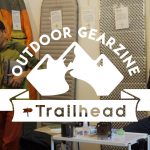 What does UL packing look like for masters? 06 We recommend "vertical" for sacoche
What does UL packing look like for masters? 06 We recommend "vertical" for sacoche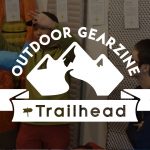 What does UL packing look like for masters? 02 The secret to packing is how you use the stuff sack.
What does UL packing look like for masters? 02 The secret to packing is how you use the stuff sack.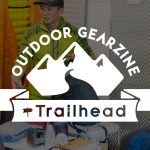 What does UL packing look like for masters? 01 What is the contents of Arai Yusuke's carefully selected backpack?
What does UL packing look like for masters? 01 What is the contents of Arai Yusuke's carefully selected backpack?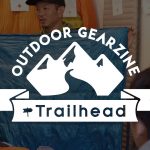 What does UL packing look like for masters? 03 How to use sleep bags and sleeping pads
What does UL packing look like for masters? 03 How to use sleep bags and sleeping pads